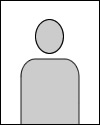| Abstract: |
Purpose: To determine whether cryopreserved solutions of the thrombolytic agent alteplase could be used as a safe, effective, and economically reasonable alternative to urokinase in patients presenting with occluded central venous access devices (CVADs). Materials and Methods: Alteplase has been reported as an efficacious alternative to urokinase for treatment of occluded CVADs. However, the practicality of using alteplase as the thrombolytic of choice for this indication remained conjectural. To make this approach economically feasible, alteplase was diluted to 1 mg/mL and 2.5-mL aliquots were stored at -20°C until use. A need to confirm that the cryopreserving and thawing of the reconstituted solution did not compromise the safety and efficacy reported from prior trials was recognized. A quality assessment initiative was undertaken to concurrently monitor the safety and efficacy of this approach. Patients presenting with occluded CVADs received a sufficient volume of the thawed alteplase solution to fill the occluded catheter(s). Data, including efficacy, adverse reactions, dwell time, and catheter type, were collected over a 5-month period. Results: One hundred twenty-one patients accounting for 168 attempted clearances were assessable for safety and efficacy. One hundred thirty-six (81%) of the 168 catheter clearance attempts resulted in successful catheter clearance (95% confidence interval, 74% to 86%). No adverse events were reported. Conclusion: Cryopreserved 1-mg/mL aliquots of alteplase are safe and effective in the clearance of occluded CVADs when stored at -20°C for 30 days. The ability to cryopreserve alteplase aliquots makes it an economically reasonable alternative to urokinase in the setting of CVAD occlusion. © 2002 by American Society of Clinical Oncology. |













